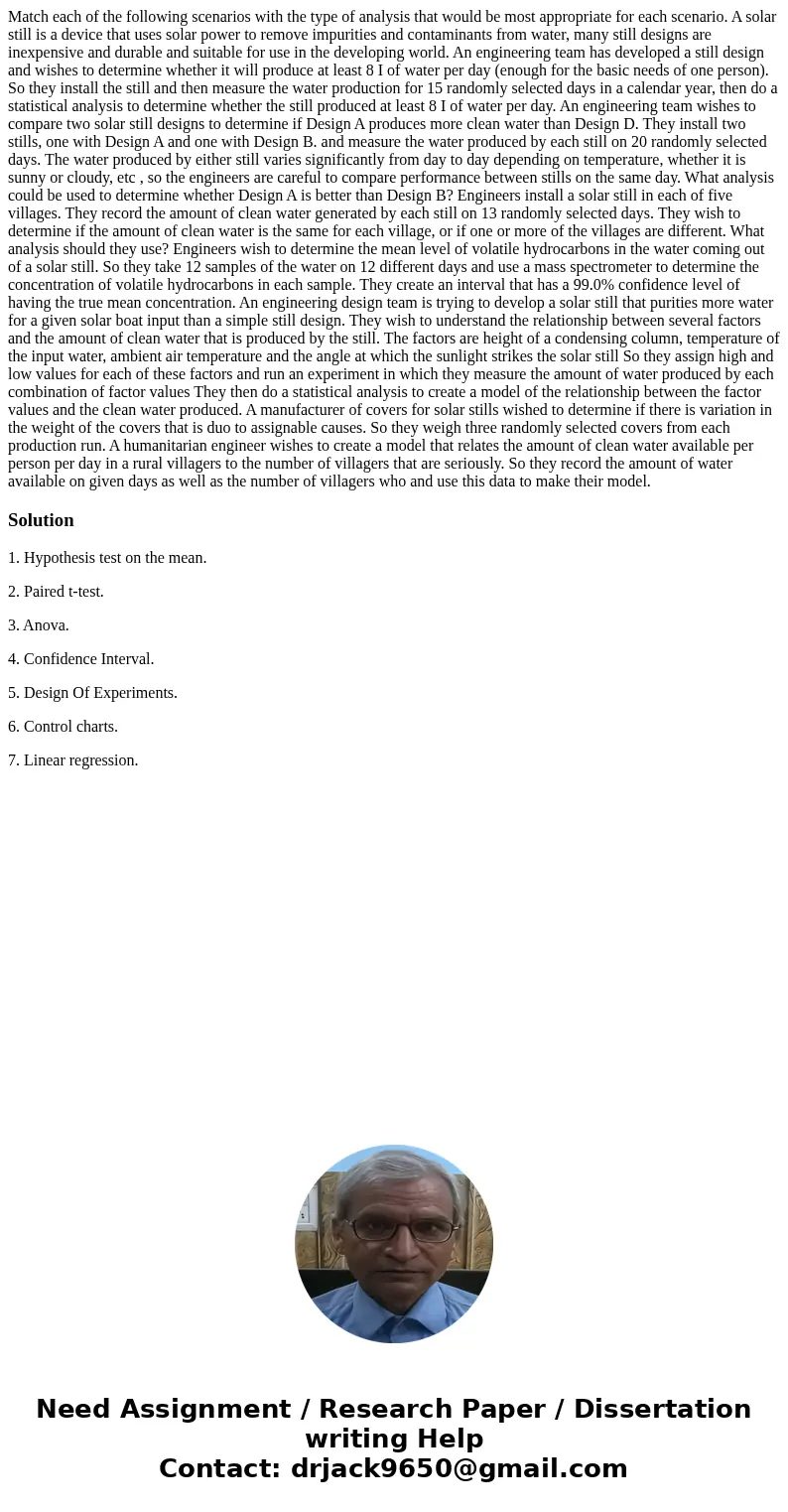Match each of the following scenarios with the type of analy
Match each of the following scenarios with the type of analysis that would be most appropriate for each scenario. A solar still is a device that uses solar power to remove impurities and contaminants from water, many still designs are inexpensive and durable and suitable for use in the developing world. An engineering team has developed a still design and wishes to determine whether it will produce at least 8 I of water per day (enough for the basic needs of one person). So they install the still and then measure the water production for 15 randomly selected days in a calendar year, then do a statistical analysis to determine whether the still produced at least 8 I of water per day. An engineering team wishes to compare two solar still designs to determine if Design A produces more clean water than Design D. They install two stills, one with Design A and one with Design B. and measure the water produced by each still on 20 randomly selected days. The water produced by either still varies significantly from day to day depending on temperature, whether it is sunny or cloudy, etc , so the engineers are careful to compare performance between stills on the same day. What analysis could be used to determine whether Design A is better than Design B? Engineers install a solar still in each of five villages. They record the amount of clean water generated by each still on 13 randomly selected days. They wish to determine if the amount of clean water is the same for each village, or if one or more of the villages are different. What analysis should they use? Engineers wish to determine the mean level of volatile hydrocarbons in the water coming out of a solar still. So they take 12 samples of the water on 12 different days and use a mass spectrometer to determine the concentration of volatile hydrocarbons in each sample. They create an interval that has a 99.0% confidence level of having the true mean concentration. An engineering design team is trying to develop a solar still that purities more water for a given solar boat input than a simple still design. They wish to understand the relationship between several factors and the amount of clean water that is produced by the still. The factors are height of a condensing column, temperature of the input water, ambient air temperature and the angle at which the sunlight strikes the solar still So they assign high and low values for each of these factors and run an experiment in which they measure the amount of water produced by each combination of factor values They then do a statistical analysis to create a model of the relationship between the factor values and the clean water produced. A manufacturer of covers for solar stills wished to determine if there is variation in the weight of the covers that is duo to assignable causes. So they weigh three randomly selected covers from each production run. A humanitarian engineer wishes to create a model that relates the amount of clean water available per person per day in a rural villagers to the number of villagers that are seriously. So they record the amount of water available on given days as well as the number of villagers who and use this data to make their model.
Solution
1. Hypothesis test on the mean.
2. Paired t-test.
3. Anova.
4. Confidence Interval.
5. Design Of Experiments.
6. Control charts.
7. Linear regression.

 Homework Sourse
Homework Sourse